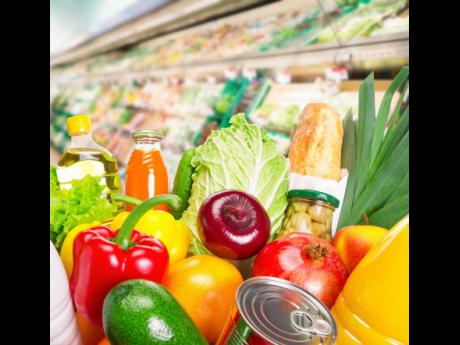Expect lower prices for fruits and vegetables
Consumers heading to the market this week should find themselves saving a few hundred dollars on the purchase of fruits and vegetables, largely as a result of an increase in the supply of produce across the island. The availability of more goods...
Consumers heading to the market this week should find themselves saving a few hundred dollars on the purchase of fruits and vegetables, largely as a result of an increase in the supply of produce across the island.
The availability of more goods typically leads to lower prices in the market.
Produce prices ranged from $35 to $850 per pound for the week ending December 11, 2021, but, when compared to prices recorded by the Jamaica Agricultural Market Information Systems, or JAMIS, a week earlier, showed an average decline of 30 per cent.
Xavier Charvis, production and marketing officer at the Rural Agricultural Development Authority, RADA, says consumers could see even lower prices this week, as farmers continue to reap produce in preparation for an uptick in demand heading into the festive season.
“Produce prices mainly reflect the supply situation in the country, and the availability of fruits and vegetables on the market has increased over the past few weeks. After the rains in October, most farmers placed crops in the ground and so now we are reaping the benefits. There was also some amount of intervention by RADA to ramp up production,” Charvis told the Financial Gleaner.
The decline in food prices is already showing in the inflation data for the month of November, which saw a 1.8 per cent dip in the index for the ‘food and non-alcoholic beverages’ category, Statin reported on Wednesday. Inflation for the month of November was zero, while the annual rate fell to 7.8 per cent, down from 8.5 per cent in October.
On JAMIS, some of the vegetables with the largest week-over-week decline were cauliflower, lettuce, string beans, pumpkin, and tomato. Fruits like green bananas, watermelon, papaya and pineapples also trended down.
The decline in prices ranged from 2.0 per cent to 57 per cent per pound across produce groups. Farmgate prices posted on JAMIS, as at December 11 were as follows:
Cauliflower: $192.08, down 23%
Lettuce (local iceberg): $155, down 43%
String bean: $45, down 57%
Sweet pepper (green): $210, down 18%
Tomato (salad): $85.83, down 34%
Green banana: $43.75, down 27%
Watermelon: $65, down 13.33%
Pineapple (sugar loaf): $90, down 8%
Papaya: $70, down 6.66%
Plantain (green): $60, 14%
“There is an increase in production in some parishes. For example, the price of tomatoes was pretty high back in October and those farmers went into production immediately after the flood rains,” Charvis said.
The parishes in which consumers can get the best bang for their buck when purchasing produce are Clarendon, St Elizabeth, St Ann and Manchester.
But while the price of some produce was trending downwards, others have been moving in the opposite direction or holding steady. Callaloo and sorrel were flat at $60 and $200 per pound, respectively.
The sharpest increase recorded for the week under review came from okra, up 100 per cent to sell at $100 per pound, while honeydew melon moved up 32 per cent to sell at $125 and cantaloupe, up 28 per cent to fetch $132.50 per pound. The price of carrots, broccoli and cucumber also went up an average 10 per cent week over week.
“That might be a reflection of the demand. Honeydew and cantaloupe are normally consumed in the hotel and restaurant industry, and, at this time of the year, there’s usually high demand for those produce,” Charvis said.
Nevertheless, Charvis anticipates that prices will continue trending down over the month of January into mid-February.
“Based on the numbers that I have seen, these prices should continue into February, but I can’t speak on any time after that. February into March is the dry season so, based on what has happened over the years, prices might start to increase late February into March,” he said.


